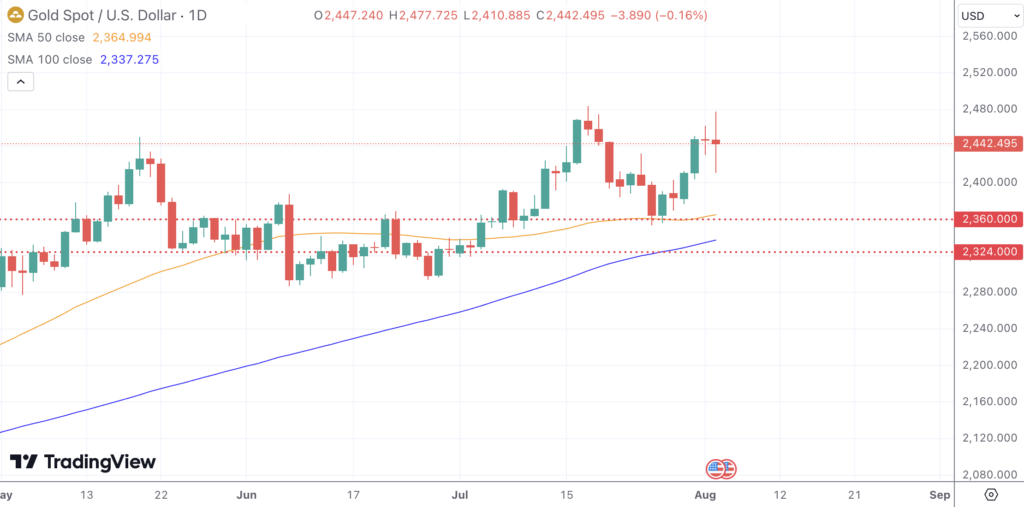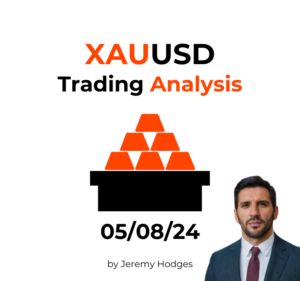Key Takeaways
- Gold prices have been influenced by weak US jobs data and rising expectations of Federal Reserve rate cuts.
- Key technical levels include support at the 50-day SMA ($2,360) and resistance at $2,480 and $2,500.
- Geopolitical tensions in the Middle East provide additional support for gold as a safe-haven asset.
- Upcoming US economic data, particularly the ISM Services PMI, will be closely watched for further market direction.
- Traders should prepare for potential volatility, with both economic data and geopolitical developments likely to impact gold prices.
Market Dynamics and Recent Performance
Gold prices have experienced a mix of bullish pressures and profit-taking in recent weeks, driven by economic data and geopolitical tensions. The price of gold saw a strong rally, driven by weaker-than-expected US jobs data and increasing expectations of Federal Reserve rate cuts. However, gold faced some selling pressure below the key level of $2,450, reflecting a potential for short-term pullbacks.
The US Nonfarm Payrolls report showed a weaker increase of 114,000 jobs in July, significantly below the expected 175,000, which raised fears of a recession and heightened the possibility of rate cuts by the Federal Reserve. Additionally, geopolitical tensions in the Middle East, particularly involving potential escalations between Israel and Iran, have bolstered gold’s appeal as a safe-haven asset.
Technical and Fundamental Influences

Technically, gold is hovering around crucial support and resistance levels. The 50-day Simple Moving Average (SMA) at $2,360 is a key support point, with further support at the 100-day SMA around $2,324. On the upside, resistance is seen at $2,480 and the psychological level of $2,500. A breakout above these levels could pave the way towards $2,425 and potentially higher.
Fundamentally, gold’s bullish momentum is supported by expectations of Federal Reserve rate cuts and geopolitical uncertainties. Federal Reserve Chair Jerome Powell’s recent comments have increased market bets on a potential rate cut in September, with the CME FedWatch Tool indicating a 70% chance for a 50-basis-point cut. The weak US jobs report has further fueled these expectations, leading to a weaker US dollar and lower Treasury yields, which make gold more attractive.
Additionally, ongoing geopolitical tensions in the Middle East continue to support gold prices. The situation remains volatile, with several nations advising their citizens to leave Lebanon amid fears of a wider conflict. These geopolitical risks enhance gold’s status as a safe-haven asset, providing further support to prices.
Looking Forward
In the upcoming week, gold traders will closely monitor US economic data, particularly the ISM Services PMI, which is expected to show an improvement from 48.8 in June to 51.0 in July. Stronger-than-expected data could lift the US dollar and cap gains in gold prices. Conversely, weaker data would reinforce expectations of rate cuts and support gold.
Additionally, geopolitical developments will continue to play a crucial role in gold’s price movements. Any escalation in Middle East tensions could drive further safe-haven demand for gold. Traders should remain vigilant to potential volatility and be prepared for both upward and downward movements in gold prices.

